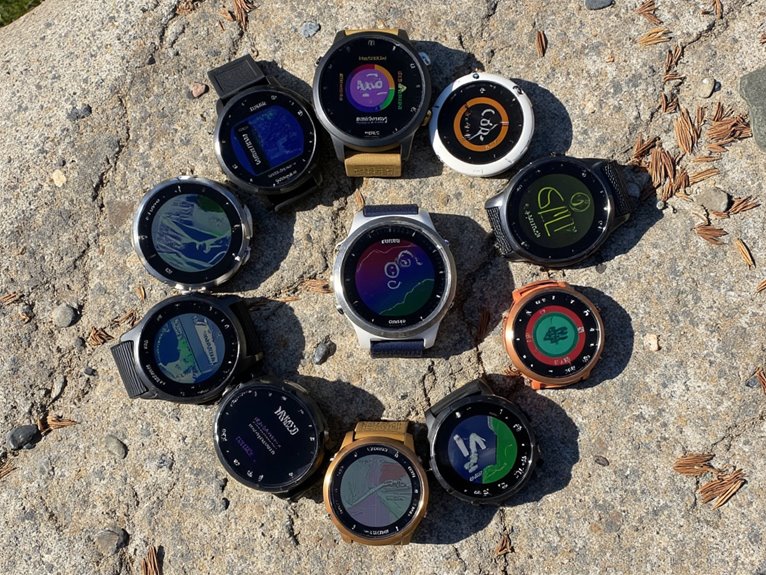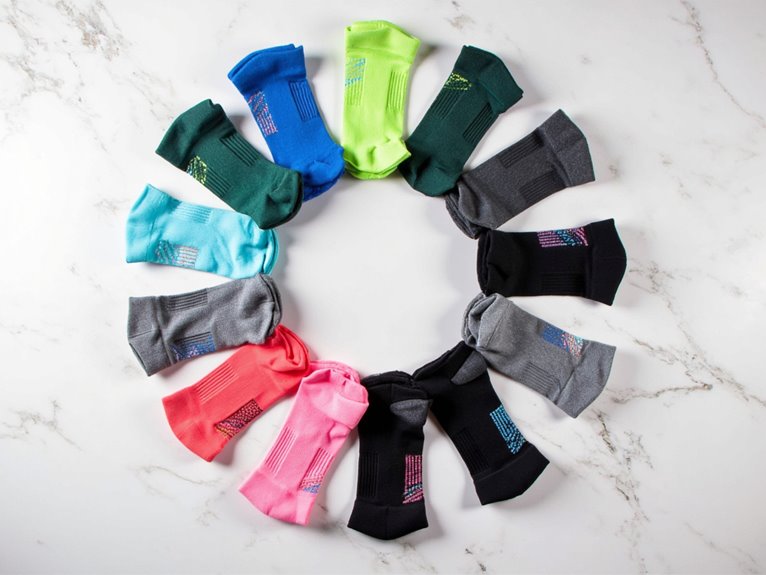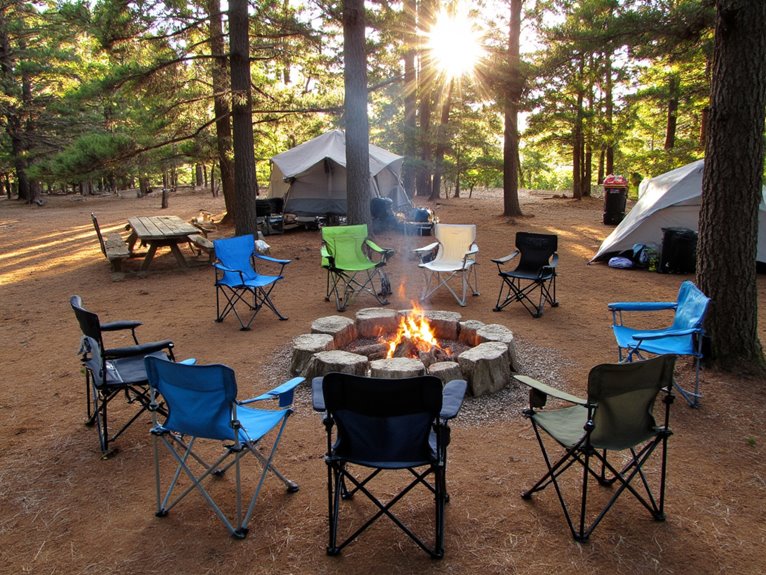Can Stainless Steel Go in a Campfire?
Stainless steel can withstand high temperatures, but its suitability for campfire use depends on the specific grade and its temperature tolerance. Most grades can handle temperatures between 800°F (427°C) and 1000°F (538°C) without compromising corrosion resistance or structural integrity. However, prolonged exposure to extreme temperatures can lead to thermal fatigue, carbide precipitation, and reduced ductility. Campfires can reach temperatures ranging from 500°F (260°C) to 1,500°F (816°C), making it essential to choose the right grade and follow proper handling and maintenance techniques to prevent damage and guarantee reliable performance. There's more to discover in mastering campfire cooking with stainless steel.
We are supported by our audience. When you purchase through links on our site, we may earn an affiliate commission, at no extra cost for you. Learn more. Last update on 13th December 2025 / Images from Amazon Product Advertising API.
Understanding Stainless Steel Grades
Stainless steel, a ubiquitous material in outdoor gear, comprises over 100 distinct grades, each with its unique composition, properties, and applications.
These grades are categorized based on their chemical composition, corrosion resistance, and mechanical properties.
Austenitic grades, such as 304 and 316, are commonly used in outdoor equipment due to their high corrosion resistance and durability.
Ferritic grades, like 409 and 410, offer better magnetic properties and are often used in cookware and utensils.
Martensitic grades, including 420 and 440, are known for their high strength and hardness, making them suitable for cutlery and blades.
Understanding the differences between these grades is essential in selecting the right material for a specific outdoor application.
Temperature Tolerance of Stainless Steel
When exposed to high temperatures, the microstructure and properties of stainless steel can undergo significant changes, potentially affecting its performance and lifespan in outdoor applications.
The temperature tolerance of stainless steel is influenced by its alloy composition and processing history.
Most grades of stainless steel can withstand temperatures between 800°F (427°C) and 1000°F (538°C) without compromising their corrosion resistance or structural integrity.
However, prolonged exposure to extreme temperatures can lead to thermal fatigue, carbide precipitation, and reduced ductility.
Understanding the temperature tolerance of stainless steel is essential for selecting the appropriate grade for campfire applications, ensuring the material can withstand the heat without compromising its performance or safety.
Campfire Temperature Ranges
Campfires can reach temperatures ranging from 500°F (260°C) to 1,500°F (816°C), depending on factors such as the type of wood, airflow, and moisture content.
The temperature of a campfire can fluctuate markedly, with hotspots near the flames and cooler areas near the periphery.
Additionally, the temperature can vary depending on the stage of the fire, with higher temperatures often occurring during the peak burning phase.
Understanding the temperature range of a campfire is vital in determining whether stainless steel can withstand the heat.
This knowledge is essential in making informed decisions about using stainless steel cookware or equipment in a campfire setting.
Effects of Heat on Stainless Steel
High temperatures can cause stainless steel to undergo significant changes in its microstructure, potentially affecting its strength, corrosion resistance, and overall durability.
Prolonged exposure to heat can lead to the formation of chromium carbides, which can compromise the alloy's corrosion resistance.
Additionally, high temperatures can cause stainless steel to undergo thermal expansion, potentially leading to warping or deformation.
To safeguard against these effects, proper handling and maintenance of stainless steel equipment in high-temperature environments, such as campfires, is crucial.
By recognizing the potential consequences of heat exposure, outdoor enthusiasts can take necessary precautions to prolong the lifespan of their stainless steel gear.
This knowledge is vital to prevent damage and guarantee the reliable performance of stainless steel equipment.
Cooking With Stainless Steel Safely
To guarantee the safe and effective use of stainless steel cookware in outdoor settings, it is imperative to understand the proper techniques and precautions necessary for cooking with this versatile material.
When cooking with stainless steel, it's essential to preheat the cookware gradually to prevent thermal shock. Avoid sudden temperature changes, as this can cause damage.
Additionally, never leave cookware unattended over high heat, as this can lead to overheating and potential damage.
When cooking, use a moderate heat source, and avoid using abrasive cleaners or scourers, which can scratch the surface.
Preventing Warping and Damage
When exposing stainless steel cookware to high-temperature campfires, it is essential to take proactive measures to prevent warping and damage.
A well-designed cookware piece with heat-resistant features can substantially reduce the risk of deformation.
Heat Resistant Design
Stainless steel's heat resistant design is essential in campfire settings, as it prevents warping and damage that can render cookware useless.
The material's thermal conductivity and specific heat capacity allow it to withstand high temperatures without compromising its structure.
Additionally, stainless steel's chromium content forms a protective oxide layer, further enhancing its heat resistance.
This unique combination of properties enables stainless steel cookware to maintain its shape and integrity, even when exposed to direct flames or extreme heat.
As a result, campers can confidently use stainless steel cookware over a campfire, without worrying about deformation or damage.
Campfire Safety Precautions
Beyond its inherent heat-resistant properties, proper campfire safety precautions are essential to preventing warping and damage to stainless steel cookware.
When using stainless steel in a campfire, maintain a safe distance from direct flames to avoid overheating.
Place cookware on a heat diffuser or cooking grate to distribute heat evenly.
Avoid sudden temperature changes, as this can cause warping.
Never leave cookware unattended, as this can lead to overheating and damage.
Regularly inspect cookware for signs of wear and tear, and retire it if damaged.
Choosing the Right Stainless Steel
Selecting the appropriate type of stainless steel for campfire cookware is essential, as different grades vary substantially in their corrosion resistance, durability, and heat tolerance.
For campfire cooking, it's recommended to use 18/8 or 18/10 stainless steel, which offer excellent corrosion resistance and can withstand high temperatures.
These grades contain a minimum of 18% chromium and 8% or 10% nickel, guaranteeing excellent durability and resistance to rust.
Avoid using lower grades, such as 410 or 420, as they may corrode or discolor when exposed to heat and moisture.
Campfire Cooking Best Practices
When cooking over an open campfire, prioritizing even heat distribution and controlled flames is vital to prevent hotspots that can damage your stainless steel cookware.
To achieve this, build a well-structured fire pit with a central flame and adjustable logs to regulate the heat.
Position your cookware at a safe distance to allow for even heat circulation. Avoid direct exposure to intense flames, as this can cause warping or discoloration.
Instead, cook over medium to low heat, adjusting the flames as needed.
Stainless Steel Maintenance Tips
Proper cleaning and storage of stainless steel cookware is essential to maintaining its durability, non-reactive properties, and overall performance.
To clean stainless steel, avoid using abrasive materials or harsh chemicals, as they can scratch or corrode the surface. Instead, use mild soap and warm water, and dry thoroughly to prevent water spots.
For tough stains, mix baking soda and water to create a paste, then scrub and rinse.
Store stainless steel cookware in a dry place, away from direct sunlight, to prevent discoloration.
Regularly cleaning and maintaining your stainless steel cookware will help it remain in peak condition for your next camping trip. By following these simple tips, you can extend the lifespan of your stainless steel cookware and enjoy years of reliable performance.





